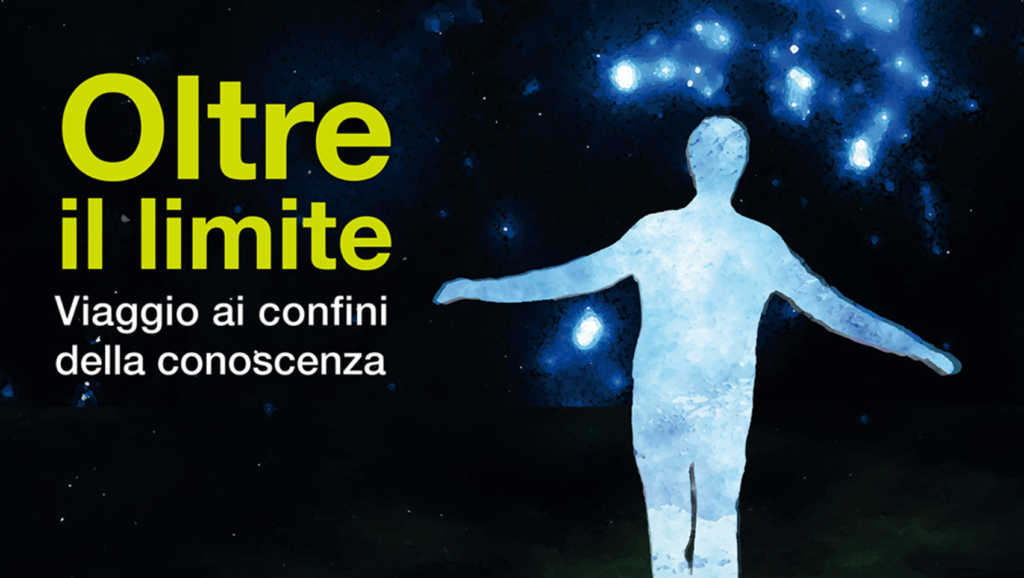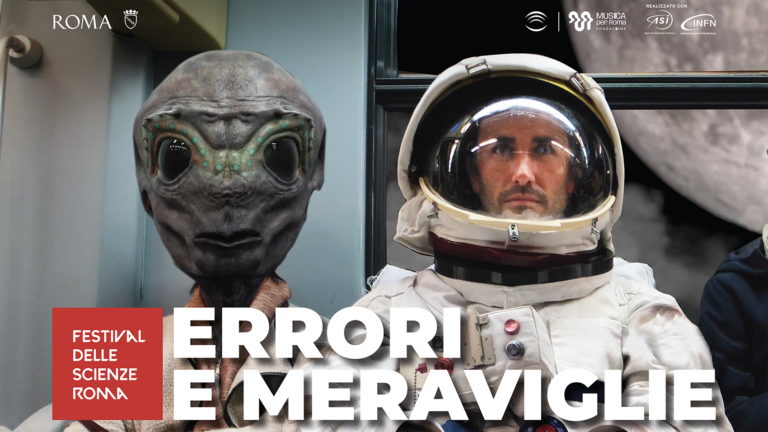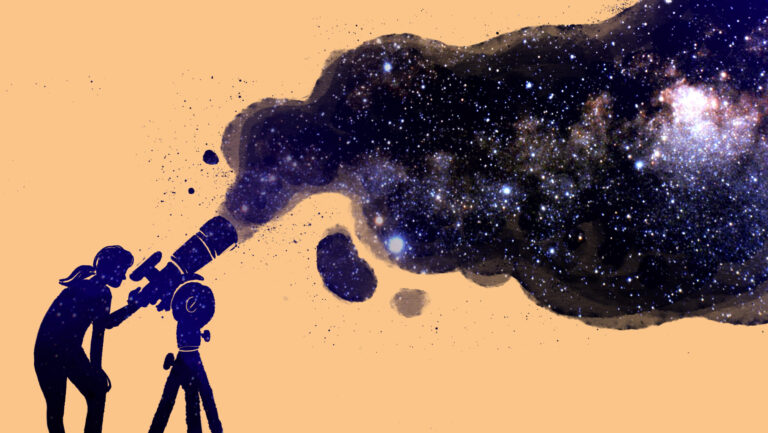The exhibition Beyond the limit. Journey to the boundaries of knowledge proposes a journey to the boundaries of knowledge to discover the limits faced by physics and astrophysics in an attempt to understand and describe the universe and its history. The itinerary is a total immersion, characterised by the presence of multimedia video installations, interactive exhibits and original components from experiments, models and videos.
The exhibition is divided into four thematic areas, each representing a challenge for contemporary science: Space-time, Energy and matter, Visible and invisible, Origins. The exhibition, in which the contents are divided into various areas reflecting the multidisciplinary approach which characterises MUSE, is the fruit of the collaboration that INFN has pursued for many years with Italian video artists and creative programmers, such as camerAnebbia and Federica Grigoletto. The exhibition is accompanied by a programme of events revolving around the concept of limit and aims to involve scientists, musicians, journalists and sports personalities.
Beyond the limit is promoted by Muse and National Institute for Nuclear Physics, with the partecipazione of Italian Space Agency and the collaborazione of University of Trento and Fondazione Bruno Kessler.
Journey to the boundaries of knowledge
In the last century, all areas of knowledge have seen their boundaries advance, allowing man to exceed the limits in almost every sphere of life. Today, we are used to move quickly, to communicate effectively and rapidly across the globe, to scrutinise the remote boundaries of the Cosmos and to calculate and simulate with increasingly powerful computers. To describe – therefore – and predict increasingly better and more accurately, natural events, biological or social behaviour, the economy and the processes of our brain. All these limits have been overcome thanks to technology, but also to a new vision and understanding of the Universe and the physical reality around us.
Science has brought us to overcome the limit, revealing the laws governing the infinitely small and the mechanisms of matter, as well as cosmic events that occurred in remote places and times. In other cases it has discovered an insuperable limit – such as that of the speed of light. We have learnt to see the invisible and reveal the myriad of signals and particles that reach the Earth from space. The “Beyond the limit” exhibition allows us to take a close look at these invisible, yet decisive boundaries for our life, letting us imagine distant worlds that only physics and science have been able to explore.
The itinerary of the MUSE exhibition consists of several interactive video installations that will allow visitors to experience the limit and extreme physical realities.
SPACE-TIME
For a long time space and time have been conceived by humans as unchangeable. In reality, thanks to Einstein, we discovered that space and time, as well as being inextricably linked, are deformed in the Universe by the mass of celestial bodies. It is due to this same curvature, for example, that we will never be able to cross the threshold that separates a black hole from our Universe, where time slows to a standstill. Entering one of the total immersions of the exhibition, visitors will be able to change the shape of space, as happens to a star or a black hole.
Interactive exhibit: Space-time
This is a video installation in which the presence and movements of people bend and alter the shapes of a grid projected on a transparent wall. A visual metaphor representing the deformation of space and time produced by large mass bodies in the Cosmos. The bodies of the public have the same effect as black holes or supernovae that bend the Space-Time grid.
Interactive exhibit: gravitational hole
We can think of the Cosmos as an elastic sheet on which celestial bodies rest like balls and which curves the most in correspondence with the heaviest bodies. In general, all bodies are affected by gravitational force. Therefore, a body that orbits around another one is actually rolling in the depression it has created in space-time.
MATTER AND ENERGY
Nothing can travel faster than light. And that of the speed of light is probably the most fascinating limit of modern science, also because the mass of matter, on reaching such limit, is transformed into energy. That is what happens in particle accelerators, where subatomic particles are taken to the threshold of the speed of light to collide at extremely high energy and decay back into other particles. This is the most effective way found by physicists to explore the infinitely small and discover the invisible laws of matter. In an area of the exhibition, the public will be able to play with an interactive installation and “materialise” and then dematerialise themselves, acquiring mass as happened in the primordial Universe to elementary particles.
Il dono della massa – The gift of mass
It is an interactive installation on the Higgs mechanism, the physical phenomenon according to which the elementary particles gained mass in the primordial Universe. Thanks to an interactive and multimedia installation, the public can virtually experience losing and acquiring their mass, thus being stimulated to reflect on the physical meaning of the famous Higgs boson discovered in 2012 at CERN in Geneva and for which the Nobel Prize for Physics was awarded in 2013 to two theoretical physicists, Peter Higgs and François Englert, who first suggested its existence.
Exhibit: cloud chamber
The cloud chamber is the simplest of particle detectors. It is able to reveal the invisible particles of cosmic rays and radioactivity in the environment showing their traces. The chamber is filled with supersaturated alcohol, ready to condense at the slightest change in its concentration. When an electrically charged particle passes through it, the alcohol is condensed in the space around its transit, resulting in a cloud of very small droplets of alcohol. The size, density and shape of the traces provide important clues as to the type of particle, in particular its mass and electric charge.
INVISIBLE UNIVERSE
In this area, visitors will be able to look at the threshold between the visible and invisible Universe, consisting of signals and particles that we observe through detectors and experiments, both on the Earth’s surface or in space as well as underground and under the sea. Visitors will be able to observe live the traces of particles that pass through a cloud chamber, one of the first detectors used by physicists to see the cosmic particles that constantly pass through us. But they will also be able to try to get lost in the invisible dimensions of space, in addition to the three in which we live, whose existence physicists have not yet been able to demonstrate. In the exhibition, visitors will in fact be able to cross them virtually and play at leaving the space in which we live with an interactive installation.
Video installation: Extra dimensions
An interactive installation to experience through one’s body the existence of extra dimensions, virtually exiting the three-dimensional space in which we live to reappear in other invisible dimensions of the universe.
Exhibit: Multifrequency. A touch-screen exhibit that allows you to select different frequencies with which to view the universe. Depending on the frequency selected your point of view will change.
ORIGINS
If we trace back the history of the Universe we will reach an insuperable limit. The instant at which for the first time light was emitted by matter, some three hundred thousand years after the Big Bang. To us, the light arrives in the form of weak radiation, that of the cosmic background. No older light signal can ever reach us. Thanks, however, to the information obtained from this faint echo of the Big Bang (from cosmic rays, neutrinos and gravitational waves that were generated at the dawn of the Universe) we now know how to reconstruct the origins and evolution of our Universe with extraordinary precision. In the exhibition, the words of scientists and stories through images will take visitors close to this threshold, symbol of a limit along which we continue to advance, each time encountering a new boundary.
Video installation: Expansion of the Universe
Expansion of the Universe This is an interactive installation consisting of a workstation and a video. On approaching and moving away from the workstation, visitors change the video in front of them representing the expansion of the universe. Moving their hands close “compresses” the universe to bring it back to the big bang. Moving them away gives rise to expansion.




